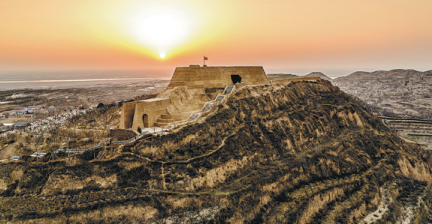Discovering fire throws light on prehistoric site

A museum has been built at the Xihoudu archaeological site, where evidence is found for one of the earliest civilizations in China. [Photo by Xiao Yongjie for China Daily]
Fire is so important to human civilization that Prometheus is regarded as one of the greatest legendary Greek heroes for being said to have stolen fire from heaven for humans.
Indeed, the evolution of the human being is closely related to the use of fire. And remains of fire use is a basic criterion for archaeologists to judge the level of civilization in prehistoric sites.
A site of prehistoric human activities in Xihoudu village in Ruicheng county, Shanxi province, might point to the earliest evidence of intentional use of fire by humans.
The Xihoudu site by the Yellow River was discovered in the early 1960s by a team led by renowned archaeologist Jia Lanpo.
Jia's findings include animal fossils and stone tools such as cutting and grinding tools, as well as deer horns and other animal bones with cutting marks. The dating technology of that time revealed that they were made by humans 1.8 million years ago.
Wang Jian, another famed Chinese archaeologist, discovered more evidence of the intentional use of fire-scorch marks of fire on animal bones, which might also be another world's first in terms of discovery.
In a book jointly published by Jia and Wang in 1978, Xihoudu is supposed to be the relic site for the earliest Chinese civilization.
To help archaeological enthusiasts and tourists understand the value of the site, a museum has been built in Xihoudu.
Parts of the discovered items and replicas are now displayed in a 380-square-meter showroom at the museum.
The museum has also hired a group of skilled tour guides to help visitors recognize and study the evidence of human activities on the remains.
At the museum, visitors can also experience life in prehistoric times through the use of modern technology such as multimedia and augmented reality.
The exhibition features a section for a number of top Chinese archaeologists, including Jia Lanpo, Wang Jian and Wang Yiren, who contributed to the discovery of the site.
Wang Yiren is the youngest among the three. He continued his studies based on the discoveries of his two predecessors.
His new research has led to even greater excitement in archaeological circles: the latest carbon-14 dating technologies show that the history of the site could be more than 2.4 million years old, according to his essay published in a French periodical last November.
Li Shu contributed to this story.



